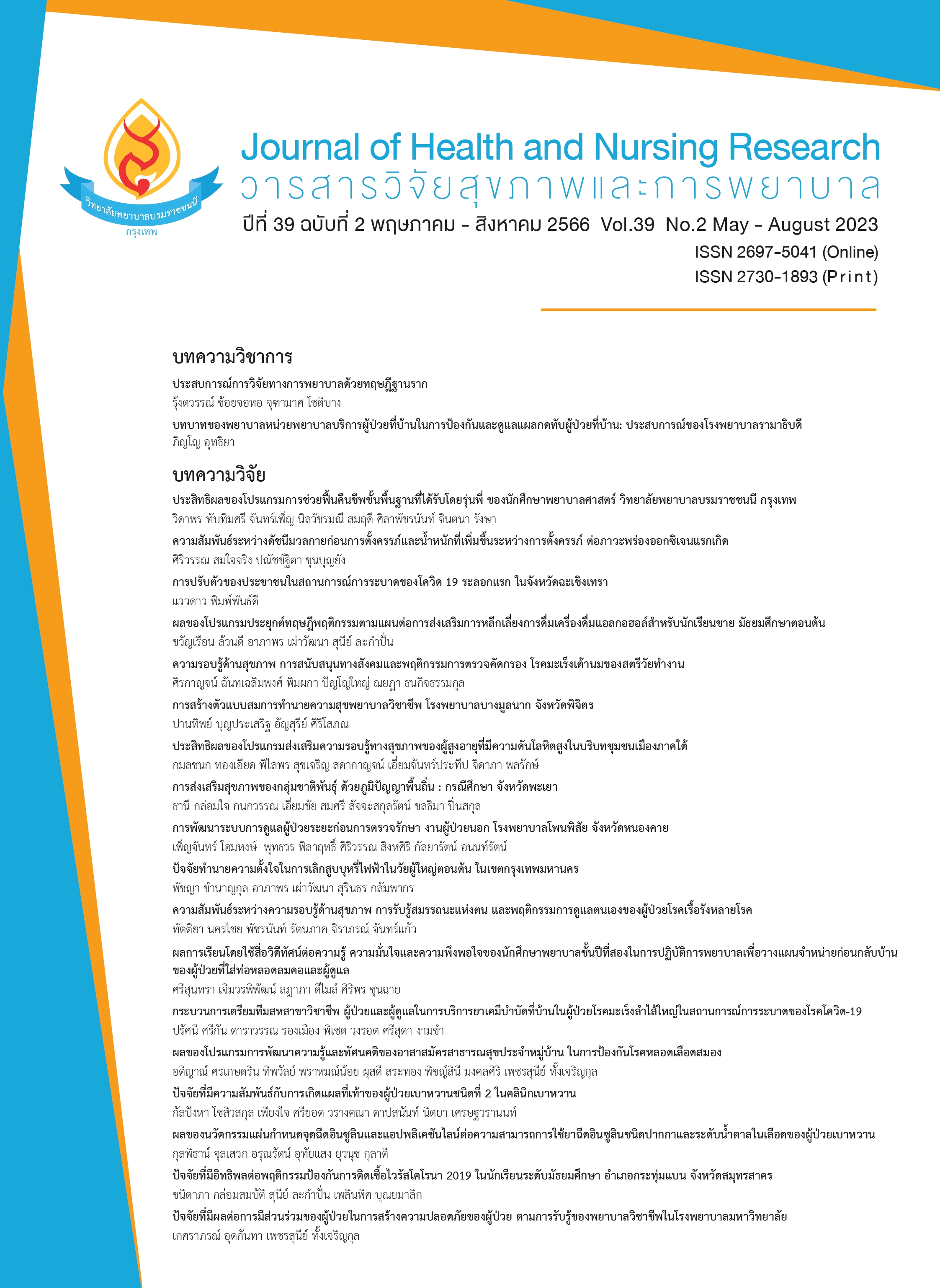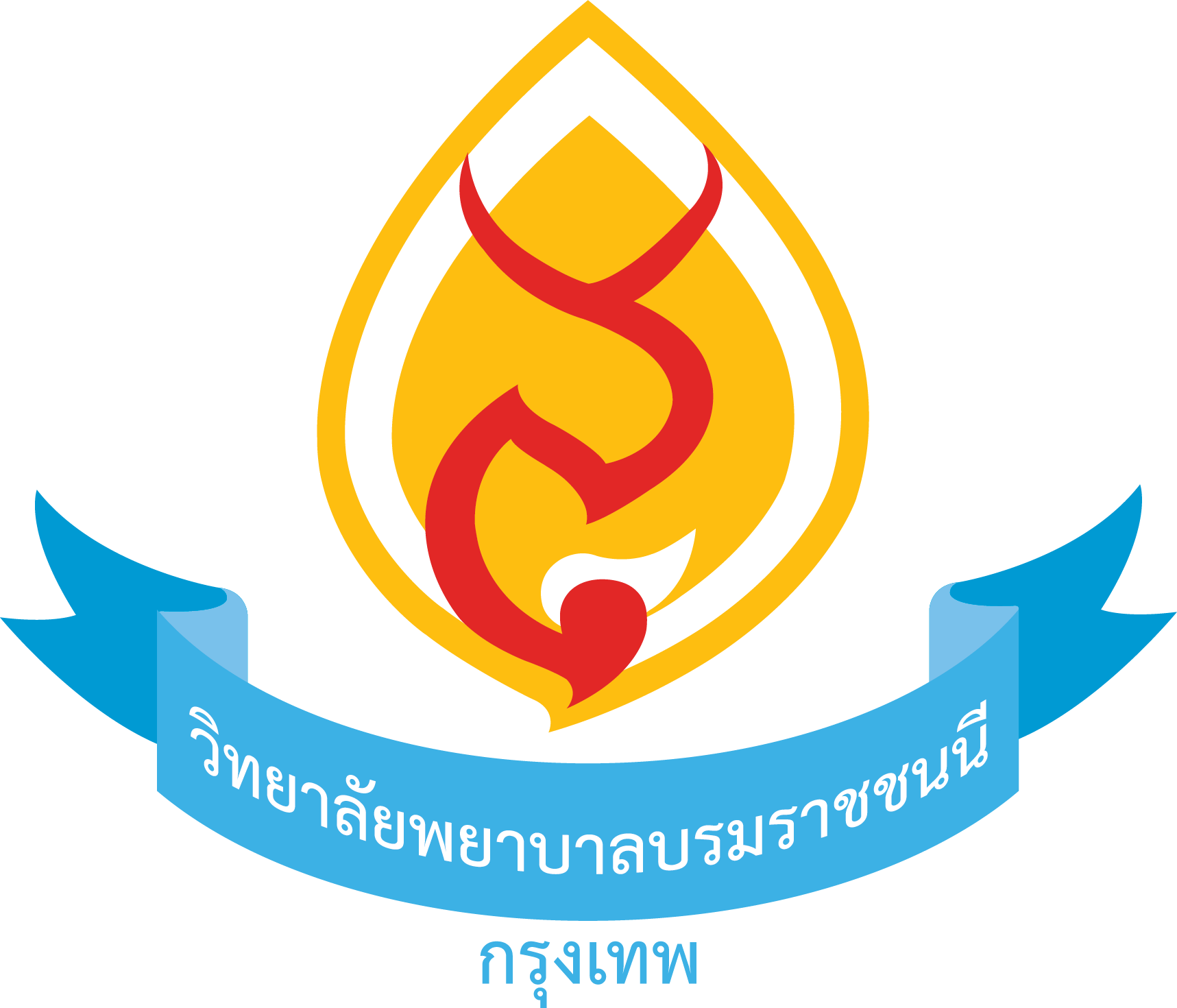Effects of The Innovative Insulin Injection Point Plates and Line Application on Ability for Insulin-Penfill Injection and Fasting Plasma Glucose among Diabetic Patients
Keywords:
innovation, Insulin-Penfill injection ability, fasting plasma glucose, diabetic patientsAbstract
Introduction: Proper insulin injection is indispensable to achieving adequate control of diabetes mellitus and preventing complications. Errors in insulin administration may result in treatment ineffectiveness.
Research objectives: To study the effects of innovative insulin injection point plates and the LINE application on insulin-penfill injection ability and fasting plasma glucose levels among patients with diabetes mellitus (DM).
Research methodology: This study was two-group quasi-experimental research based on a pretest and posttest design with a comparison group. The sample was patients with type 2 diabetes aged 18-60 years. The sample was selected through purposive sampling, divided into experimental and control groups by simple random sampling with 12 participants in each group. The control group received standard routine care, and the experimental group received standard care along with the utilization of insulin injection point plates and the NKP Smart DM care application. Data were collected from May 2022 to January 2023. The instrument of this study was the outcomes encompassed modifications in insulin-penfill injection proficiency. The acquired data underwent analysis using the Mann-Whitney U Test, Wilcoxon Matched Pairs Signed-Ranks test, and paired t-test.
Results: The results indicated that the participants in the experimental group showed a significant increase in score on ability for insulin injection at 8 weeks compared to the control group. Furthermore, the experimental group had better posttest insulin injection ability than at pretest with statistical significance (p < .05). In terms of fasting plasma glucose levels, the participants in the experimental group had a significant reduction in fasting plasma glucose levels ( = 202.50, SD = 54.75) compared to pretest (
= 282.83, SD = 48.59), but there was no statistically significant difference compared to the control group.
Conclusions: The innovative insulin injection point plates and the NKP smart DM care application enhances the usability of insulin pen injections, but it has no impact on fasting plasma glucose levels in diabetic patients.
Implications: Nurses can actively facilitate continuous coaching by employing the inventive insulin injection point plates and the NKP Smart DM care application to promote the proficiency of insulin-penfill injection usage, and should consider extending the duration of study to assess the effectiveness of blood glucose control in diabetic patients.
Downloads
References
Division of Non Communicable Diseases. Prevalence and mortality rate of Non Communicable Diseases 2016-2019 [Internet]. 2020 [cited 2021 Dec 1]. Available from: http://www.thaincd.com/2016/mission/documents-detail.php?id=13893&tid=32&gid=1-020
Division of Non Communicable Diseases. Number and mortality rate of Non Communicable Diseases 2017-2021 [Internet]. 2023 [cited 2023 Apr 1]. Available from: http://www.thaincd.com/2016/mission/documents-detail.php?id=14480&tid=32&gid=1-020
Gregg EW, Hora I, Benoit SR. Resurgence in diabetes-related complications. Jama 2019;321(19):1867-8.
Diabetes Association of Thailand. Clinical practice guideline for diabetes 2017. 3th ed. Bangkok: Romyen Media Company Limited;2017. (in Thai).
Promchaisri K, Lerkiatbundit S, Saengcharoen W. Effect of self-efficacy enhancing program on ability to use Insulin-penfill injection among patients with diabetes type 2: a randomized controlled trial. Thai Journal of Pharmacy Practice 2019;11(3):648-58. (in Thai).
Patil M, Sahoo J, Kamalanathan S, Selviambigapathy J, Balachandran K, Kumar R, et al. Assessment of insulin injection techniques among diabetes patients in a tertiary care centre. Diabetes & Metabolic Syndrome: Clincal Research & Reviews 2017;11:S53-S6.
Auttasook R, Mato T, Pongpanich P. Incidence and causes of incorrectly insulin injection of patients who visited at diabetic clinic in Jainad Narendra hospital [Internet]. 2017 [cited 2021 Aug 31]. Available from: http://www.chainathospital.org/chainatweb/assets/research/research29.pdf
Demir G, Er E, Atik Altınok Y, Özen S, Darcan Ş, Gökşen D. Local complications of insulin administration sites and effect on diabetes management. Journal of Clinical Nursing 2022;31(17-18):2530-8.
Karakes V, Pragodpol P. The effects of medication injection teaching by using GPS insulin’s innovation on fasting plasma glucose in diabetes patients who treated with insulin injection. Journal of Nursing and Health Care 2017;35(3):145-154. (in Thai).
Jenjirawat C, Kengganpanich T, Kengganpanich M, Benjakul S. Effects of a self-insulin administration promoting program among persons with diabetes in Golden Jubilee Medical Center, Nakhon Pathom province. Ramathibody Nursing Journal 2017;23(2):229-41. (in Thai).
Sirimongkollertkul N, Singmanee C, Rattanawichai T, Pongleerat S. The development of an application for monitoring diabetic patients in the community. Royal Thai Medical Journal2020;73(3):141-50. (in Thai).
Yingyaun K, Charoensri S, Pongchaiyakul C. Effect of using mobile messenger for insulin injection education for glycemic control: a randomized controlled trial. Pacific Rim International Journal of Nursing Research 2022;26(3):461-73.
Junthongsook P, Piaseu N, Kaveevivithchai C. Health status, health promoting behaviors and use of mobile health application among service users in private hospitals. Journal of Nursing Science Chulalongkorn University 2016;28(3):147-59. (in Thai).
Vaidya AS, Srinivas MB, Himabindu P, Jumaxanova D. A smart phone/tablet based mobile health care system for developing countries. Annual International Conference of the IEEE Engineering in Medicine and Biology Society 2013;2013:4642-5.
Huedhun K. The influence of Line application in the present communication. Journal of Arts Management 2017;1(2):75-88. (in Thai).
Draznin B, Aroda VR, Bakris G, Benson G, Brown FM, Freeman R, et al. Facilitating behavior change and well-being to improve health outcomes: standards of medical care in diabetes-2022. Diabetes Care 2022;45(Supplement_1):S60-S82.
Jittsue A, Sangjam P, Treesak C, Hanlerdrit T. Assessment of knowledge and practice of patients before and after counseling in the use of the reusable insulin pen at Vachiraphuket Hospital. Journal of Health Science and Medical Research 2016;34(1):27-37. (in Thai).
Misnikova IV, Gubkina VA, Lakeeva TS, Dreval AV. A randomized controlled trial to assess the impact of proper insulin injection technique training on glycemic control. Diabetes Therapy 2017;8:1309-18.
Jeon E, Park H-A. Development of the IMB model and an evidence-based diabetes self-management mobile application. Healthcare Informatics Research 2018;24(2):125-38.
Represas-Carrera FJ, Martínez-Ques ÁA, Clavería A. Effectiveness of mobile applications in diabetic patients’ healthy lifestyles: A review of systematic reviews. Primary Care Diabetes 2021;15(5):751-60.
Polhan B, Wattanakitkrileart D, Pongthavornkamol K. The effects of education and inhaler skills program through Line application on symptom control among asthmatic patient. Journal of The Royal Thai Army Nurses 2019;20(3):93-103. (in Thai).
Zhai Y, Yu W. A mobile app for diabetes management: impact on self-efficacy among patients with type 2 diabetes at a community hospital. Medical Science Monitor 2020;26:e926719-1.
Downloads
Published
How to Cite
Issue
Section
License
Copyright (c) 2023 Journal of Health and Nursing Research (Journal of Boromarajonani College of Nursing, Bangkok)

This work is licensed under a Creative Commons Attribution-NonCommercial 4.0 International License.
Article published Is the copyright of the Journal of Health and Nursing Research (Boromarajonani College of Nursing, Bangkok) Cannot be republished in other journals


















